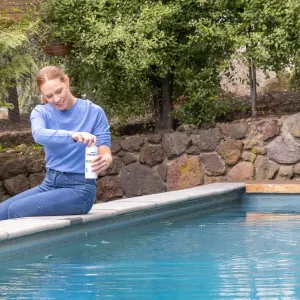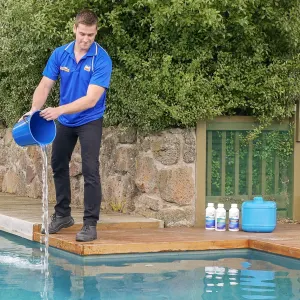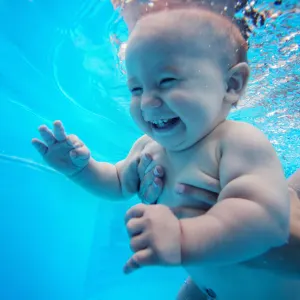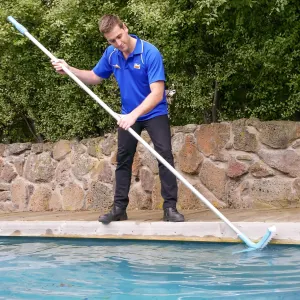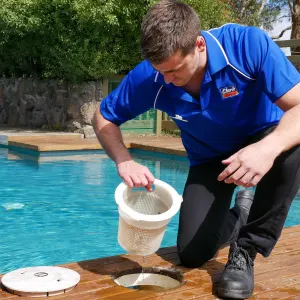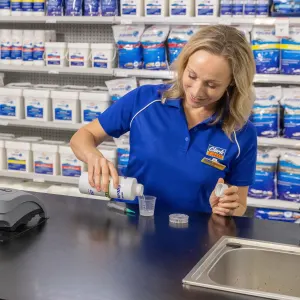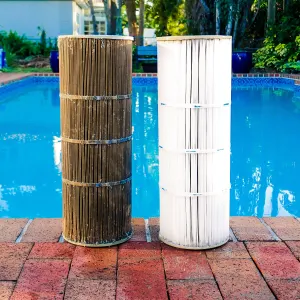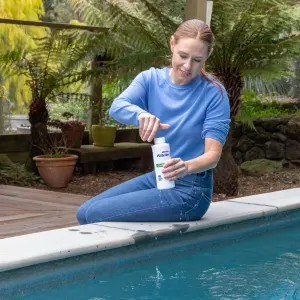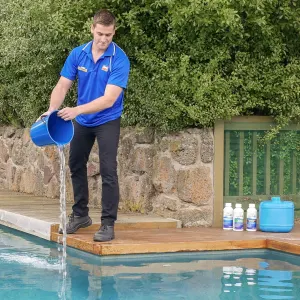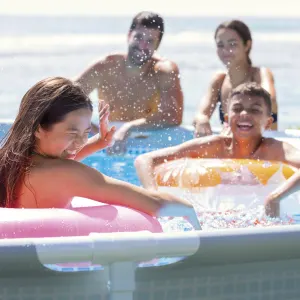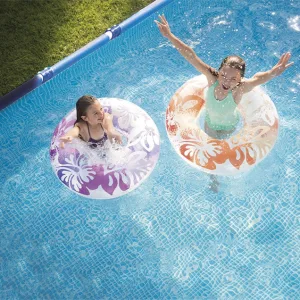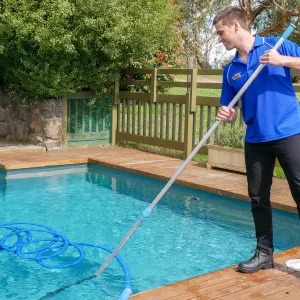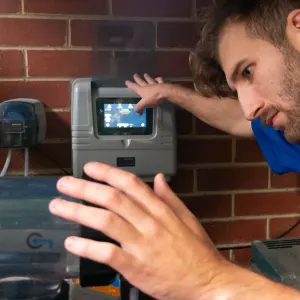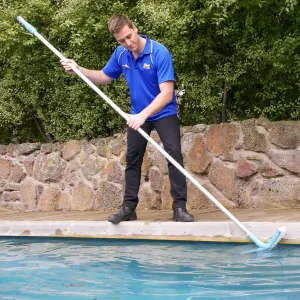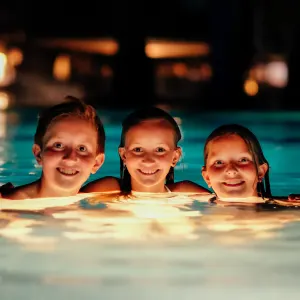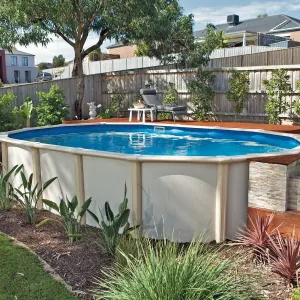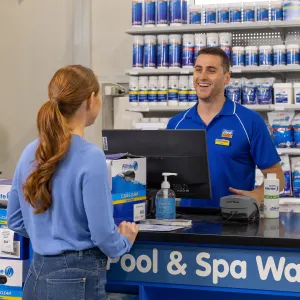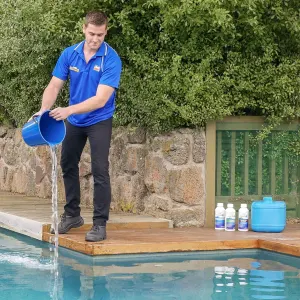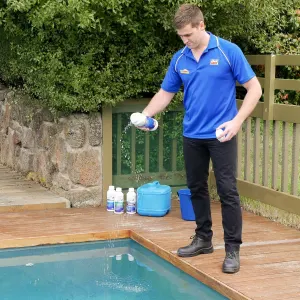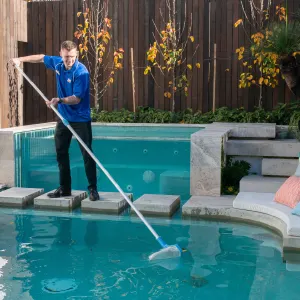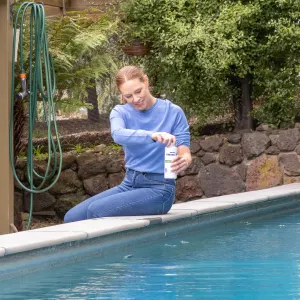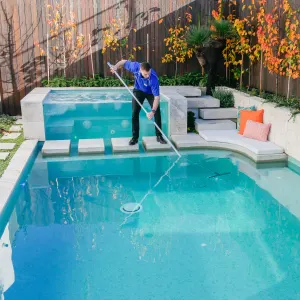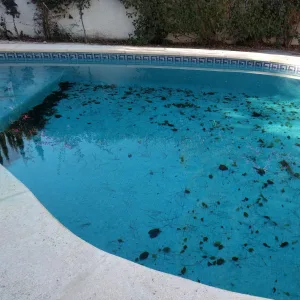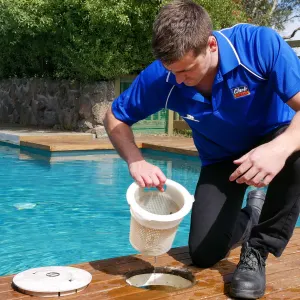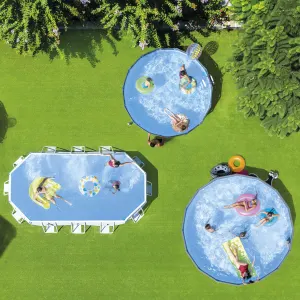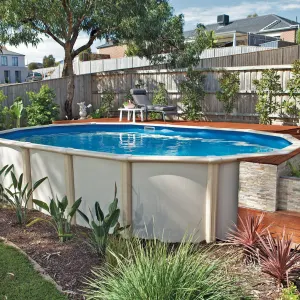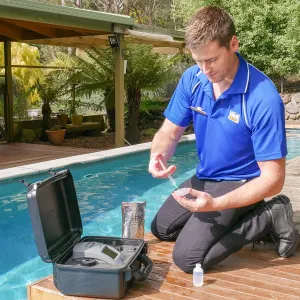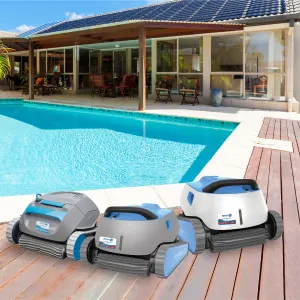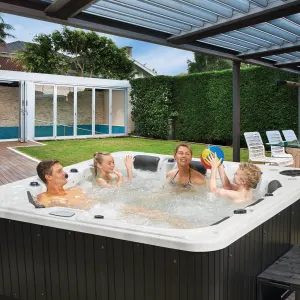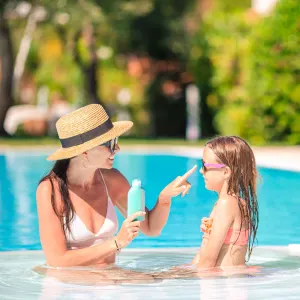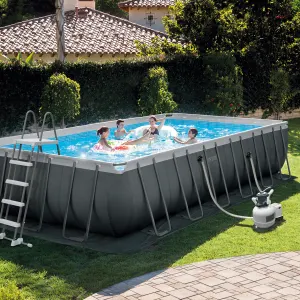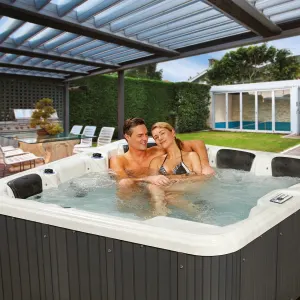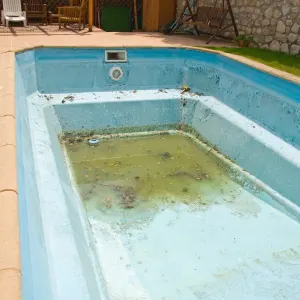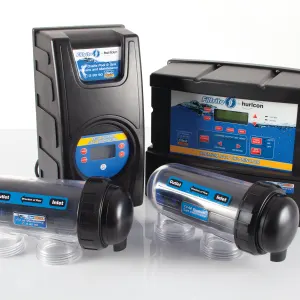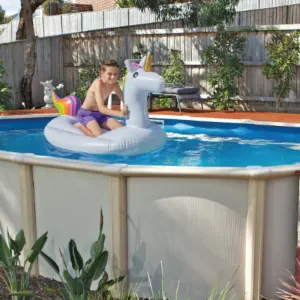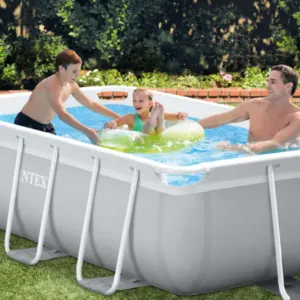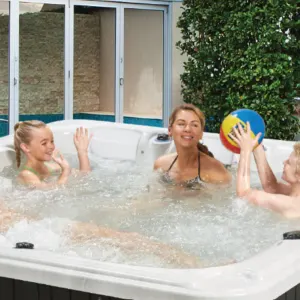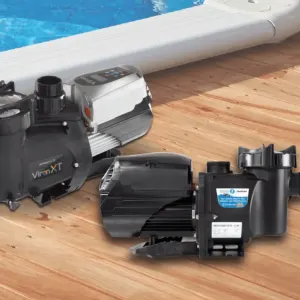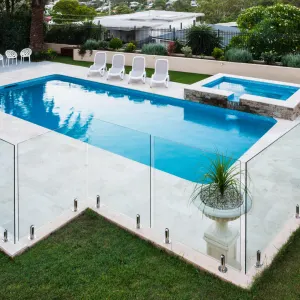5 Tips for an Energy Efficient and environmentally-friendly pool
By Clark Rubber | 14th June, 2023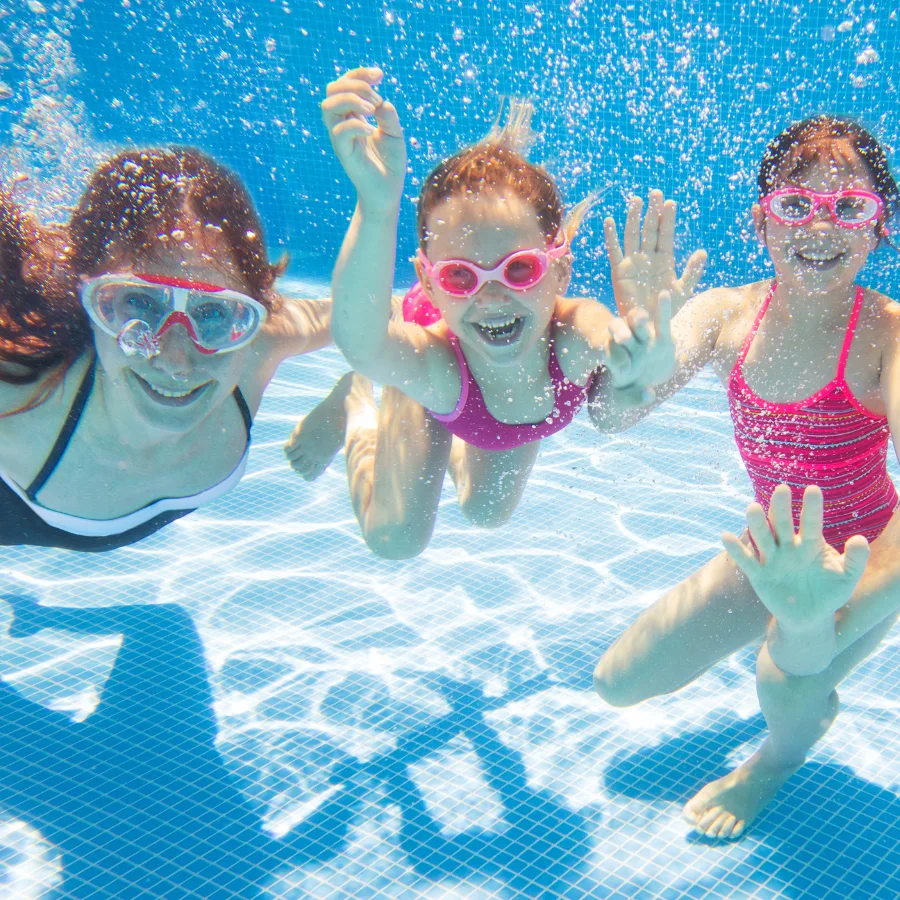
Energy efficiency and the environment are important considerations in our lives today, so as a pool owner it is also important to understand how you can be more sustainable, how you can reduce energy consumption and how you can save money.
Learn more by watching our video and reading on, below:
A typical pool has a range of appliances that are used to circulate water, sanitise water, clean the pool and to heat it. Typically a pool is running for 8 hours or more in summer so the costs of running all of these appliances can really add up.
Naturally, as a pool owner you want the most efficient and environmentally friendly appliances to minimise your impact on the environment and to lower the cost of pool ownership.
If you're a pool owner looking to save money on energy bills, there are several ways that you can minimise your impact on the environment and lower power consumption. Here are six tips to help you run a more sustainable and energy-efficient swimming pool:
- Optimise your pool pump / Run more efficiently
- Be energy efficient with pool heating
- Invest in a pool cover
- Use an efficient pool cleaner
- Clean and maintain your pool equipment
1.Optimise your pool pump or Install an Energy Efficient Pump:

Your pool pump is the heart of your pool system and is critical for keeping your pool water crystal clear and clean. However, it’s also one of the most energy-hungry appliances in your home and so it is an important appliance to focus on to find reductions in energy use.
Here are some tips on how to optimize your swimming pool pump for energy efficiency:
Keep your pump filter clean:
When the leaf basket gets clogged and dirty with debris, your pump’s efficiency can decline. When the flow is restricted to the pump it will have to work harder and longer to circulate and filter your pool water, and therefore will consume more energy.
Install a timer switch on the pump:
A timer switch will help you control when your pump turns on and off and how long it runs for, so you can control the run time and avoid the pump running for longer than is necessary.
If you have a saltwater chlorinator or some other type of control system with a timer, your pump can be plugged into this system and controlled by its timer to your set run times.
Use a properly sized pump:
It is essential that your pump operates efficiently and that its performance is matched correctly to your pool system, so make sure to choose a pump that is the right power for your pool's needs.
The higher the power of the pump, the more energy it uses. Ultimately you want a pump with the lowest power consumption that will adequately circulate the whole volume of your pool at least once, in your standard filtration times. Often pumps are the wrong size for the pool system or may be running for longer than necessary, and so you may be using more power than you actually need to.
Traditional single-speed pumps only operate at one high speed, regardless of the pool system. Generally speaking a traditional single-speed pump will operate for around 8-10 hours in summer and 4-6 hours in winter. If your single speed pool pump is running longer hours than this and is oversized, it may be running it longer than necessary and it may be costing you too much to run.
If you’re unsure, visit a Clark Rubber store to get the advice you need. When you do this, please be prepared with the following information:
- The volume of water in your pool. If you don’t know this, provide the dimensions and average depth of your pool.
- The regular operating times of your pump.
- The current brand of pump and model. A photo of the pump’s specification label will be useful.
- The current type and size of your filter.
Use an energy-efficient pool pump:
If your pump running costs are too high, or it is ageing and due for replacement, consider investing in an energy efficient pump such as a variable speed or a multi-speed pump.
Variable speed and multi-speed pumps allows you to adjust the pump's speed to meet your pool's needs. Slowing the motor speed, reduces the flow rate and this will significantly reduce energy consumption and lower your energy bills.
Variable Speed Pumps are the latest pumping technology and use up to 90% less energy than traditional single-speed pumps. They are designed to match the pump’s flow rate to your pool volume. They can then run at lower flow rates and therefore lower your power consumption, making them better for the environment and for your operating costs.
When shopping for a replacement pool pump, look for the star rating label. The more stars it has, the more energy efficient the pump is. An energy efficient pump such as the Astral P320XT Variable Speed Pump for example has a high 6-star rating.
Check out our range of energy efficient pool pumps
2. Be energy efficient with pool heating:
It is a great luxury to have a swimming pool, and a luxury to have it heated pool, however heating a large body of water does require lots of heat energy.
Solar Pool Heating:
If you can reduce your reliance on non-renewable sources of energy for hearting, you can help reduce your carbon footprint and make a positive impact on the environment.
The most efficient and cost-effective way to heat you pool is using solar pool heating such as Clark Rubber’s Solar Eezy system. Solar pool heating is an eco-friendly option as it uses the sun’s free and renewable energy to heat your pool water.
As long as the sun is shining, Solar Pool heating can not only extend your swimming season, but it can also save you money and reduce your carbon footprint. These systems consist of a roof-mounted thermal collector that captures the suns energy. Pool water is circulated through the roof top collector where the sun’s thermal energy is transferred into the water and then sent back to the pool, to steadily heat it up. The solar heating system uses a controller and sensors, that detect when the solar energy is ample, and then activates a pump to send water up to the roof.

Efficient Electric Heat Pump Pool Heaters:
If your aim is to extend your swimming season and enjoy your pool all year round, then you will need to heat the pool in the cooler months and even through Winter.
Heating a pool requires a lot of energy and so finding an efficient heating system is imperative to minimise energy consumption and to lower your costs.
Pool heat pumps are the latest in pool heating technology and might be just the solution you're looking for! They use refrigerant technology in reverse, to extract the latent heat energy from the surrounding air, and to transfer it into the water with minimal power consumption.
Unlike solar heating systems, heat pumps can be used any time of year and are ideal for maintaining the desired set temperature in your pool.

Reduce the set temperature on your pool heater:
If you already have a pool heater, a really simple way to minimise your power consumption and power bills is to just reduce the set temperature.
The higher the temperature you set, the longer and harder the unit has to work to reach the setting. If you reduce the set point from say 30ᵒC to 26ᵒC the reduction in temperature is significant but your family will hardly notice the difference.
3. Invest in a pool cover:

Using a pool cover is a great way to be more environmentally-friendly and helps you to keep your pool cleaner too.
In the heat of Summer you may have noticed how your water levels will drop significantly in a short space of time. This is due to evaporation. When your water evaporates you have to top-up your pool with fresh water which isn’t very water-wise. Not only that, every time you top-up your pool with fresh water, you also must top up the chemicals to balance the water. Without a pool cover, this can be a constant and costly headache for you. By reducing evaporation, a pool cover will reduce your need to keep refilling the pool will save significant amount of precious water and money.
In fact a solar cover is also designed to let warmth in, and during summer can actually heat your pool by up to 8C. They are also insulators so will minimise heat losses and reduce the energy required to keep your pool warm.
Another typical phenomenon in swimming pools is heat loss. After your pool water has been heated by a solar heating system, a heat pump or a gas heater, the last thing you want is for all that heat to be lost to the surrounding air. It’s a bit like leaving the front door of your house open whilst your home heating system is on. Having a pool cover means you won't have to run your pool heater as long which will also help you to reduce your power consumption and power bills.
The popular Solar Pool Cover however is helpful for a number of reasons:
- It can help you reduce evaporation
- It will help retain the heat in your pool
- It can help to warm your pool when it's sunny
- It can minimise leaves and debris entering your pool
4. Use an efficient Pool cleaner:

Traditional suction and pressure cleaners require the operation of the pool pump to power them, which means they are using the full power of the pump whilst they operate. If you are using your pool cleaner beyond your normal filtration cycle you are also consuming even more energy in the process.
State of the art robotic pool cleaners are designed to use less power than a traditional pump-driven cleaner. They run independently of the pool’s filtration system leaving the pump to rest or to remain unburdened by the cleaner.
For example, a Filtrite robotic pool cleaner uses only 0.18kW input power compared to a common pool pump which will use around 0.75 to 1 kW per hour. Compared to a 1kW pump that’s an energy saving of around 83%. So if you consider, say a 2.5 hour cleaning cycle running most days of year, the power savings really add up.
5. Clean and maintain your pool equipment:

Another really simple way to reduce energy consumption is simply to maintain your pool and the equipment.
The more you maintain your water quality and the filtration systems, the less you will have to operate and burden the pump.
Maintaining these key areas will help to reduce energy consumption:
- Regularly remove leaves and debris from the surfaces of your pool.
- Regularly empty your skimmer basket and pump basket.
- Keep your cartridge filter clean or backwash your media filter in regular intervals.
- Maintain the water balance and the water quality.
- Ensure your sanitation is ample to fight bacteria and maintain water clarity.
The Swimming Pool and Spa Association of Australia has a nationally recognised Climate Care Certification program that acknowledges and certifies products, systems, pools and spas, as well as services that demonstrate environmentally-friendly operation to save energy and water and reduce noise. Read more about the Climate Care program here and view our list of certified products.
For more advice on owning an efficient and environmentally-friendly pool, visit your local Clark Rubber store.
